|
|
|
Hansen's Northwest Native Plant Database |
|
|
|
Arctostaphylos columbiana (Hairy Manzanita)
|
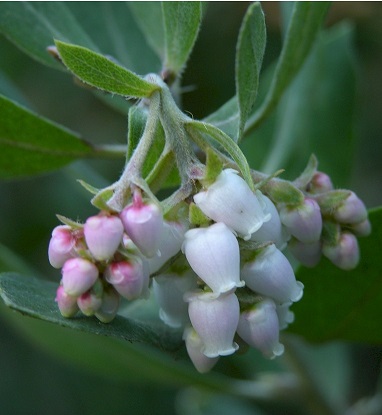 |
||||||||||||||||||||||||||||||
|
Hairy Manzanita (Arctostaphylos columbiana) is a star in the garden year round. It has all the elements a gardener loves: Tough, leathery leaves with furry undersides, plentiful pale pink bell-like flowers, edible fruit that can be enjoyed by all sorts of wildlife (also safe for humans but one botanist ranks the berries as 'barely edible'), twisted branches with deep cinnamon colored bark. We highly recommend this fine native shrub for gardens of all sizes. Because of its slow growth and low demand for water, it is superb for container gardening. We suggest planting Hairy Manzanita's little brother, Kinnikinnik (Arctostaphylos uva-ursi) as an understory either in the ground or in the container. Put in a few randomly placed Fawn Lily bulbs (Erythronium oreganum) as you compose your planting for a spring-time surprise. The Fawn Lilies will grow up between the Kinnikinnik each year in a lovely display of fresh color. |
|||||||||||||||||||||||||||||||
|
The finest and most widespread of the tall manzanitas, this evergreen shrub grows quickly to 8 10. Found in rocky areas and steep slopes, from the California coast to BC, Hairy Manzanita is hardy from USDA zones 7-10. It likes full sun, well-drained, acidic soil, a southern or western exposure and is highly drought tolerant. Hairy green leaves form at the end of the twigs, followed by delightful clusters of fragrant, white to light pink flowers. Later in the year dark, rust-colored, edible fruits form. The reddish brown bark peels and is smooth and lustrous underneath. Hairy Manzanita is one of the best ornamental natives, easily withstanding stress from city life as much as it does in the wild. |
|
||||||||||||||||||||||||||||||
Description: An evergreen shrub, from 3 - 10 feet, Hairy Manzanita (Arctostaphylos columbiana) grows upright form a single stem or branching from the base of smooth reddish brown bark.The leaves are simple, alternate, oval, 1-2 inches long, thick textured, gray- or blue-green and hairy on both sides.It flowers in spring (from March through May in California and in early June in Oregon) with clusters of small pale pink to almost white urn-shaped blossoms that have no discernable fragrance. |
|||||||||||||||||||||||||||||||
|
The fruit which follows the blooming period in mid to late June is small, 1/4 - 1/2 inches in diameter, smooth and red, and resemble a somewhat flattened tiny apple. In fact, the name "manzanita," means "little apple" in Spanish. This fruit may stay on the plant until the following spring. The young twigs are gray and as hairy as the leaves, turning a wonderful reddish-brown as they age. On older stems, the bark exfoliates giving much textural interest. The stiff, gnarled branches are very striking in their rather torturous form. Habitat and Geographic Range: Hairy Manzanita (Arctostaphylos columbiana) is distributed in USDA Zones 7 to 10 from the Coast Ranges from Sonoma County, California, north to Vancouver Island and Vancouver, British Columbia with the largest population in the southwestern part of Oregon.It grows at elevations up to 2,500 feet in California, 3,750 feet in Oregon and up to 4,950 feet in Washington.It is sometimes (but not often) found on the western slopes of the Cascade Mountain Range in Washington and Oregon.It does favor the evergreen forested coastal plains from northern California through British Columbia. |
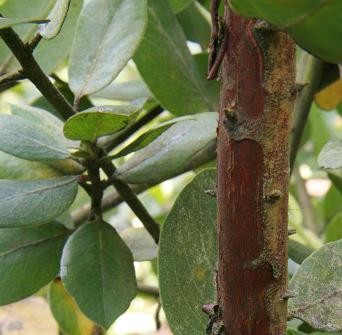 |
||||||||||||||||||||||||||||||
|
Often an initial or secondary colonizer of disturbed plant communities (as happens from fire, heavy logging or over-development), it commonly joins the communities that grow after the forest over-story is removed. Once established in such a re-population scenario, Hairy Manzanita (Arctostaphylos columbiana) will remain a member of the later open-canopied forestation. It is not often found in the heavy old-growth forests because of it's preference for more sun than this environment affords. |
|||||||||||||||||||||||||||||||
|
Best grown in full sun to light shade. Will not tolerate extremely high temperatures. This plant requires acid soils with a pH range of 3 to 7. Tolerates sandy soil to heavy clay, but will not do well in salty soil as found along the beaches. The pod sol soils of the pygmy forest in Mendocino County, California, give it a decidedly dwarfed form. Good drainage is a must--a 1 foot hole should have no standing water after 60 minutes. Naturally occurring as a member of the understory system in western coniferous forests, Arctostaphylos columbiana is also found scattered or in small clusters among other shrubs in clearings. Works well with other ericaceous plants such as huckleberries (Vaccinium) and Salal (Gautheria shallon). Other good companions are the wild roses, Pacific Madrone (Arbutus menziesii), Oregon grape (Mahonia), Snowbrush (Ceanothus velutinus), and Vine Maple (Acer circinatum). Perennials that grow under or in close proximity of Hairy Manzanita in nature are Beargrass (Xerophyllum tenax), Penstemon, Oregon stonecrop (Sedum oreganum), and many of our native ferns. Uses of Plant: The small size of this plant precludes uses as timber or main source of fire wood (branches are rarely over 5 inches in diameter). However, North American Indians did burn it at dances and ceremonials because it burns with a very bright light. |
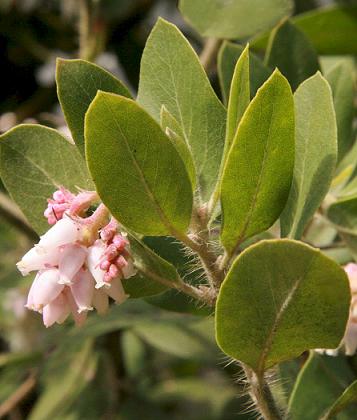 |
||||||||||||||||||||||||||||||
|
For the most part, it is currently used more for it's visual appeal than anything else. The branches are made into unusual walking staffs, table legs, lamp bases, jewelry trees, coat racks. The beautiful burls are used for small bowls or boxes or as bases for artistic creations of clay, bronze or other materials. The wood is very hard so it does make good handles for awls or other tools. |
|||||||||||||||||||||||||||||||
|
Because of the favor in which birds and other wildlife find Arctostaphylos columbiana, it is most desirable as a bird or reptile perch when these are caged. The fruit is sometimes used raw or cooked and is best harvested before fully ripe because the pulp turns mealy on maturity. Medicinally, a decoction of the bark has been used as a treatment for diarrhea, and the leaves are said to be effective as an astringent. The grey- or blue-green leaves can be boiled down for dye. It makes a wonderful yellow-brown color and is quite permanent. It does not require a mordant. The small size, beautiful bark and naturally exotic shape of this Arctostaphylos columbiana give it great appeal as a landscape plant. Little care is required once established, the drought tolerance, slower growth and the fact that it is an evergreen shrub make it a low maintenance choice for the home gardener. Perhaps our favorite use of this plant is to include it in a wildlife habitat. The fruit is very desirable to many species of birds. Black bear, coyote, black-tailed deer and many small mammals also enjoy these "little apples." Hummingbirds love the nectar from the flowers. Propagation: Hairy Manzanita is best propagated from stem cuttings, but it can be grown from seed if one is diligent and careful. The seed falls beneath the parent plant or is spread by animals. The seeds must be scarified prior to germination, which is done in nature in either the stomach of animals or by fire. The fire kills the parent plant and then scarifies the seed in the course of the burn. Although it is said that all manzanitas are capable of air layering, Arctostaphylos columbiana rarely will succeed in this form of propagation because it does not sprout from the root crown. |
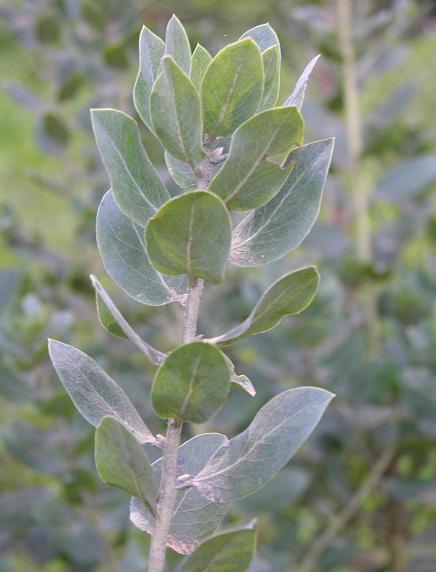 |
||||||||||||||||||||||||||||||
|
Culture: Include culture practices from small gardens to large scale production, restoration, rehab, etc. Include use of fertilizers, micro-organisms, water, pruning, weeding, chemical and other sprays, diseases and treatment, wintering over, etc. Historical and Special interest: Manzanita, Oregon, a quiet, peaceful village located in Tillamook County on the northern Oregon coast, became an incorporated city in 1946. The name means "little apple" in Spanish. Manzanita is not quite two hours west of Portland via Highway 26, 13 miles south of Cannon Beach and 25 miles north of Tillamook on Highway 101. |
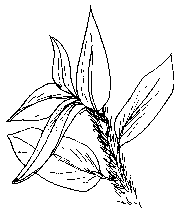 |
||||||||||||||||||||||||||||||
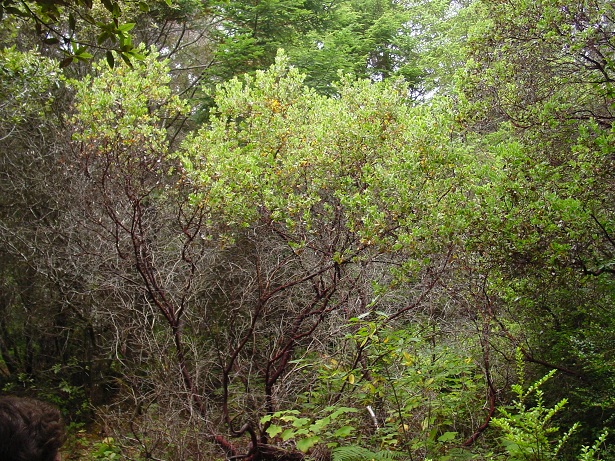 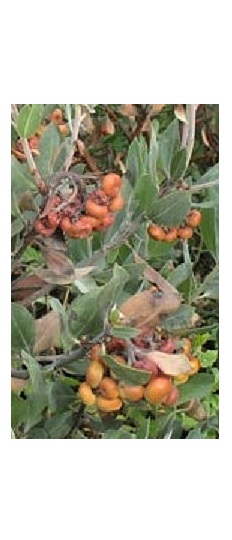
 |
|||||||||||||||||||||||||||||||
| Noah Elhardt captured the photo above left growing in Jughandle state reserve in California. The lower parts of this plant are bare of leaves due to the smaller shrubs in the understory. Conversely, the photo at right, taken by Sascha Noyes in Santa Cruz County, California, shows the form commonly seen in chaparral habitat. The center photo shows the unripe fruit. |
Photos We Share!
|
||||||||||||||||||||||||||||||
|